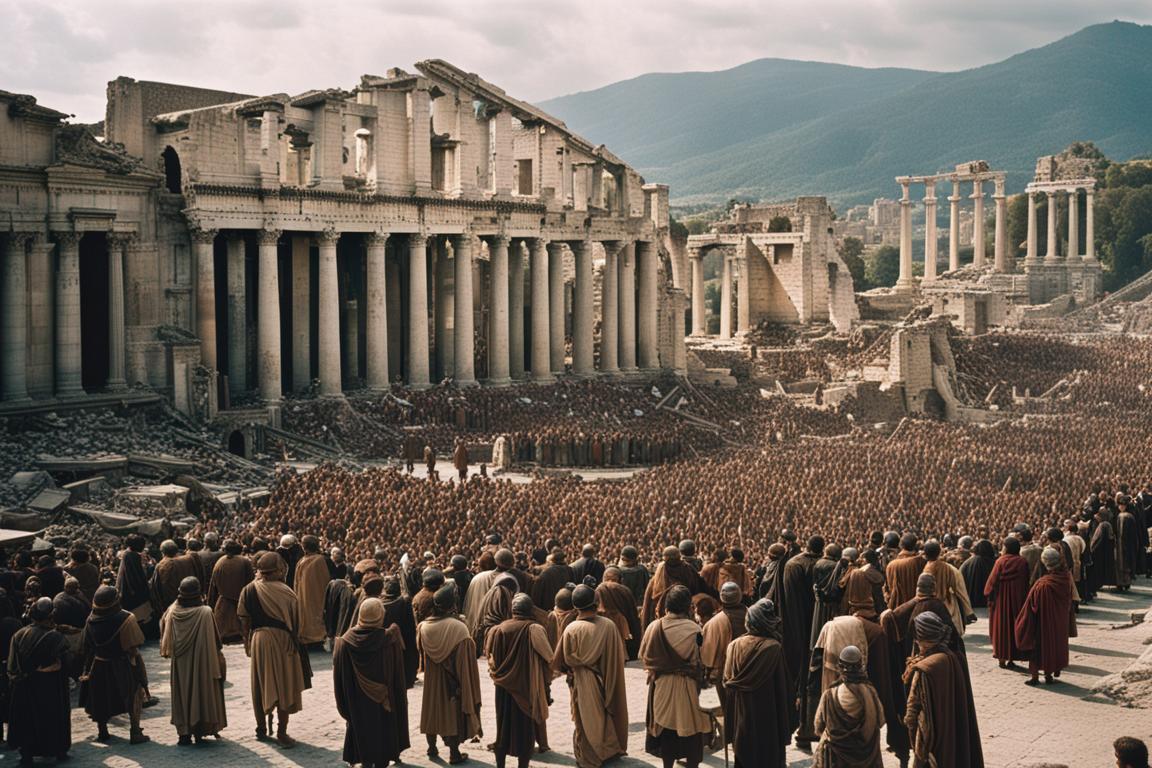1. The Cultural Foundations of Patience: How Societies Define and Value the Virtue
Patience, as a moral and social virtue, varies widely across cultures, influenced by historical contexts, religious teachings, and philosophical traditions. In many East Asian societies, patience embodies endurance and harmony, emphasizing the importance of perseverance in maintaining social cohesion. Conversely, Western cultures often valorize individual assertiveness, but still hold patience as essential in moral development and social interactions.
Historically, societies shaped their perceptions of patience through collective experiences—such as agrarian livelihoods requiring long-term waiting or societal upheavals demanding resilience. For instance, ancient Chinese philosophy, rooted in Confucianism, advocates for patience as a pathway to moral cultivation and social harmony. Similarly, Christian teachings have historically emphasized patience as a divine virtue linked to humility and faith.
Religious doctrines play a crucial role in fostering patience. Buddhism, for example, promotes the practice of calm endurance (kshanti) as a means to achieve enlightenment. In Islamic tradition, patience (sabr) is considered a fundamental trait, especially in facing life’s trials. These teachings have deeply embedded patience into the moral fabric of their respective societies, shaping behavioral norms and cultural expectations.
2. Patience in Rituals, Traditions, and Cultural Practices
Across the globe, many rituals and traditions exemplify societies’ valuation of patience. In Japan, the centuries-old tea ceremony (chanoyu) embodies meticulous patience, emphasizing mindfulness and respect through precise, deliberate movements. Similarly, the Indian tradition of Jain rituals involves elaborate practices that require unwavering perseverance and calm endurance over extended periods.
Cultural narratives and stories often highlight perseverance and endurance as moral virtues. For example, the Greek myth of Odysseus exemplifies resilience and patience through his long voyage home. In African folklore, stories of ancestors who endured hardships to establish thriving communities serve as allegories for patience and collective resilience.
These cultural practices foster a collective patience that influences individual behavior. Rituals serve as tangible expressions of societal values, reinforcing patience as a vital component of social cohesion and moral development.
3. Language, Symbols, and Expressions of Patience in Societies
Linguistic expressions often mirror cultural attitudes toward patience. In Chinese, the phrase 忍耐 (rěnnài) combines notions of endurance and fortitude, reflecting a cultural emphasis on perseverance in adversity. Similarly, in English, sayings like “patience is a virtue” encapsulate societal appreciation for the virtue.
Symbols and art also embody patience. For instance, the Japanese concept of wabi-sabi celebrates beauty in imperfection and transience, encouraging acceptance and patience with life’s imperfect process. Artistic traditions, such as the slow, deliberate brushstrokes in Chinese calligraphy or the intricate craftsmanship of stained glass windows, exemplify patience as an aesthetic and spiritual principle.
Proverbs and sayings serve as repositories of cultural patience norms. For example, the Spanish “Camarón que se duerme, se lo lleva la corriente” (“The shrimp that sleeps is carried away by the current”) emphasizes the importance of attentiveness and patience in navigating life’s challenges.
4. The Evolution of Patience in Societal Structures and Norms
Historically, societal expectations surrounding patience have evolved from communal endurance during ancient times to more individual-focused norms in modern contexts. In ancient agrarian societies, patience was necessary for crop cultivation, animal husbandry, and communal survival. Over time, institutions such as governance and justice systems incorporated patience as a foundational principle—emphasizing deliberation, due process, and social stability.
In contemporary society, patience influences governance and social cohesion through mechanisms like conflict resolution and democratic deliberation. However, technological advancements have challenged traditional patience levels. The immediacy of information and rapid communication often foster impatience, leading to societal shifts in how patience is valued and practiced.
| Societal Level | Historical Focus | Modern Context |
|---|---|---|
| Community and Agriculture | Long-term endurance for survival | Sustainable development and environmental resilience |
| Governance and Justice | Deliberation, due process | Conflict resolution, democratic patience |
| Technology and Media | Limited, slow dissemination of information | Instantaneous communication, shortened attention spans |
5. Psychological and Social Dimensions of Patience in Cultural Contexts
Cultural differences significantly influence patience-related behaviors and temperaments. For example, East Asian cultures tend to promote a more restrained, enduring temperament, often linked to collectivism and harmony. Western cultures may emphasize assertiveness but also recognize patience as a virtue in moral and professional contexts.
Societal pressures shape individual patience development. In fast-paced urban environments, constant stimuli and competitive pressures can undermine patience, while community support and cultural norms can bolster it. Studies indicate that societal expectations influence how individuals regulate their emotional responses and exhibit patience in daily life.
Patience is increasingly recognized as a vital social skill, especially in multicultural and globalized societies. It facilitates intercultural communication, conflict resolution, and collaborative problem-solving, making it an essential component for social cohesion in diverse settings.
6. Challenges to Patience in Contemporary Cultures
Modern lifestyles, characterized by rapid technological change and consumerist culture, pose significant challenges to traditional patience values. The pervasive presence of social media fosters immediacy and instant gratification, often eroding capacity for long-term endurance.
“The challenge is not just to slow down but to consciously cultivate patience as a counterbalance to modern life’s acceleration.”
Media and advertising further exacerbate impatience by promoting quick results and immediate satisfaction. In response, societies employ strategies such as mindfulness programs, educational initiatives, and cultural campaigns to cultivate patience and resilience in the digital age.
7. Cross-Cultural Exchanges and the Sharing of Patience Practices
Global interactions influence patience norms through cultural exchange, migration, and international cooperation. For instance, the adoption of mindfulness meditation from Asian traditions into Western psychology exemplifies cross-cultural transfer of patience practices.
Cultures often adapt patience virtues to their unique contexts. The rise of intercultural patience initiatives, such as international peace-building programs and multicultural dialogues, demonstrates efforts to foster mutual understanding and resilience across societies.
One notable case is the The History of Patience: From Lobsters to Modern Games, which explores how traditional patience games have been integrated into various cultures, promoting perseverance and strategic thinking across borders.
8. Connecting Past and Present: The Role of Patience in Shaping Cultural Identity
Historical patience practices serve as foundations for modern cultural narratives. For example, the enduring patience demonstrated during the construction of ancient monuments, like the Egyptian pyramids or Chinese Great Wall, reflects societal values that continue to influence contemporary identities.
Over time, patience has shown both continuity and change within cultures. While traditional rituals emphasize endurance and perseverance, modern interpretations often focus on resilience and emotional regulation. Recognizing this evolution helps societies adapt ancient virtues to contemporary challenges, ensuring cultural resilience and cohesion.
Fostering cultural patience remains vital for future societal resilience, especially as global challenges demand long-term vision and collective perseverance. Emphasizing the deep roots of patience in cultural history can inspire new generations to uphold these virtues amidst rapid change.
9. Returning to the Roots: The Parent Theme and the Ongoing Cultural Journey
Understanding the historical evolution of patience through cultural lenses enriches our appreciation of this universal trait. Traditional concepts, from the endurance of lobsters in ancient times to strategic patience in modern games, highlight the enduring importance of perseverance and restraint.
In contemporary leisure and games—such as patience card games, puzzles, or strategic video games—these traditional virtues are still celebrated and cultivated. They serve as both entertainment and moral education, reinforcing patience as essential for success and personal growth.
Reflecting on how diverse cultural perspectives deepen our understanding of patience’s universal significance enables us to foster a more resilient and harmonious society. As we face future challenges, the lessons embedded in cultural history remind us that patience remains a cornerstone of human civilization.




